Answers to some of the questions from the collaboration
Q. Bad OM and stability checks: how does the list compare to previously compiled ones? A few known bad OMs (e.g. 265, 446, 447) appear to be missing.
A. The file I use is specific for our run. I think it is wiser to use a list specific for the run we are interested in. The OMs you mention seem stable in our run, as it can be seen in the following plots:
Q. Time development of background: did you look at the time development of the background around the burst
time at the position of the burst ? Is the background flat ? Or are there indications of variability ?
A. Below I include a plot with the evolution of the event rate in a 20 deg x 20 deg window around the source. The hole at 126-127 is for the blinded files with the burst. You can see it is quite stable, without indications of variability.
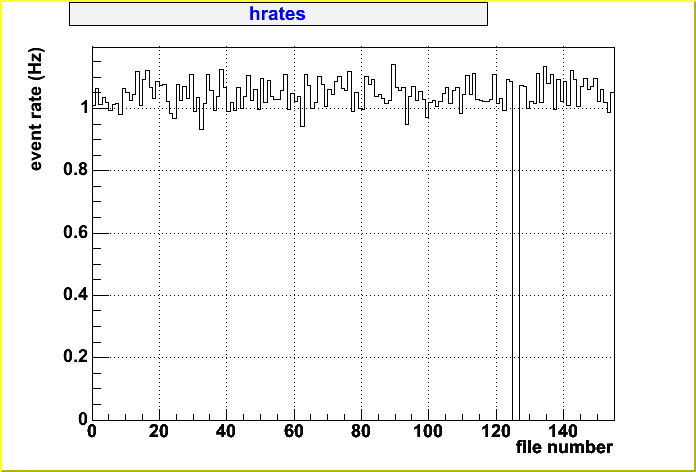
Q. Sieglinde / software tools: to our knowledge this is the first analysis done on sieglinde/SLART. And also the first one using the Convoluted Pandel function. Did you compare the reconstruction to established tools like sieglinde/classic with patched Pandel ?
At the levels of (loose) cuts I am using, the angular resolution is almost the same, as seen in the plot below, where the patched (red) and the convoluted (black) Pandel cases are compared. For stronger cuts, I have seen that results are somewhat better for the convoluted Pandel: 5% of improvement.
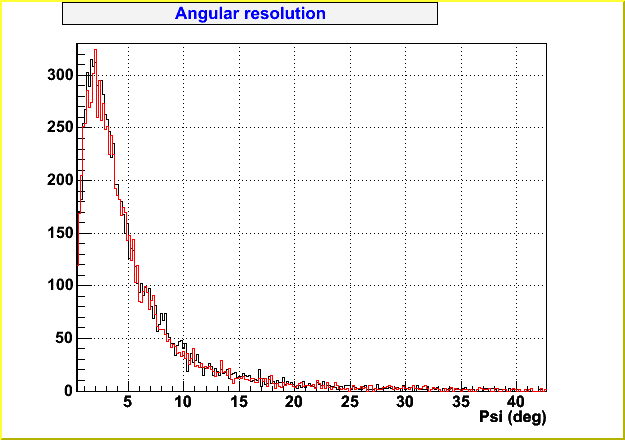
Q. Could you please show some plots comparing the resolution of SLART/Classic ? And especially a plot of the data showing the difference in reconstructed angle between SLART/Classic ?
A. There are not significant differeces, as shown is this plot provided by David, in which the zenith resolution for the Classic and SLART version of Sieglinde are compared:
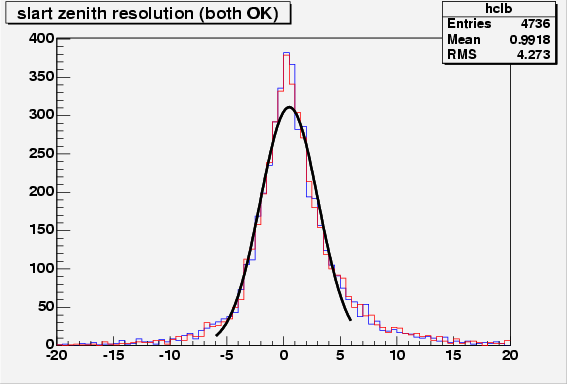
A. The file I use is specific for our run. I think it is wiser to use a list specific for the run we are interested in. The OMs you mention seem stable in our run, as it can be seen in the following plots:
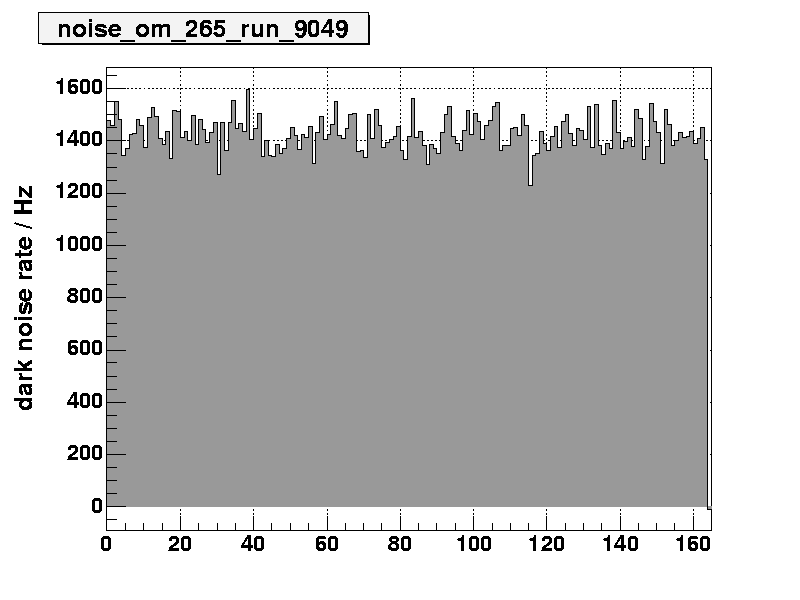 |
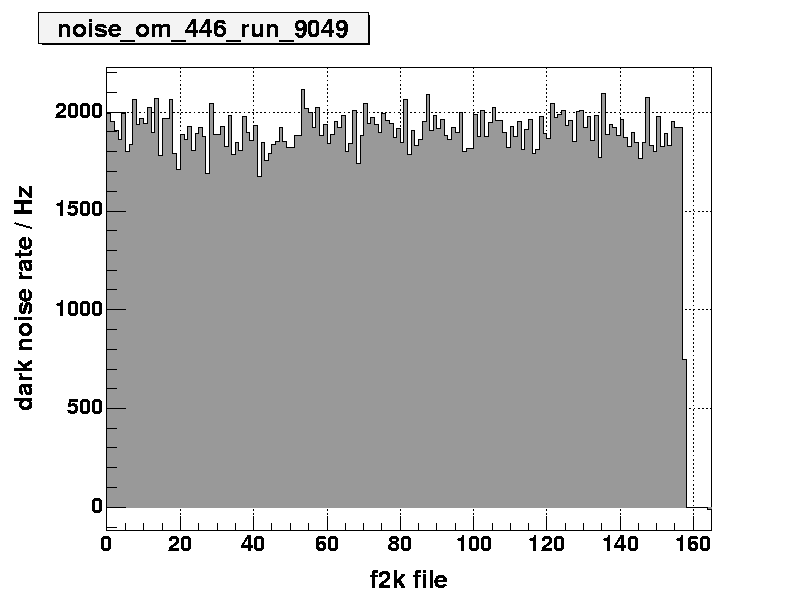 |
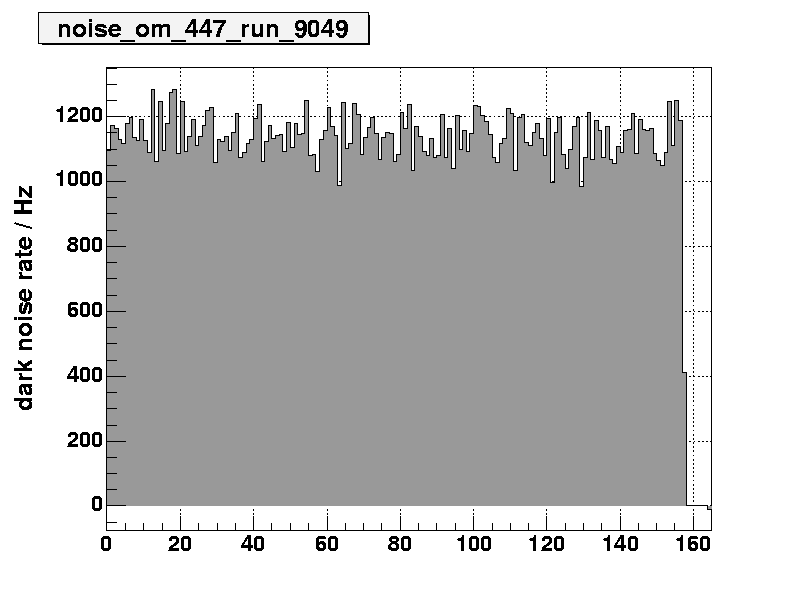 |
|
Q. Time development of background: did you look at the time development of the background around the burst
time at the position of the burst ? Is the background flat ? Or are there indications of variability ?
A. Below I include a plot with the evolution of the event rate in a 20 deg x 20 deg window around the source. The hole at 126-127 is for the blinded files with the burst. You can see it is quite stable, without indications of variability.

Q. Sieglinde / software tools: to our knowledge this is the first analysis done on sieglinde/SLART. And also the first one using the Convoluted Pandel function. Did you compare the reconstruction to established tools like sieglinde/classic with patched Pandel ?
At the levels of (loose) cuts I am using, the angular resolution is almost the same, as seen in the plot below, where the patched (red) and the convoluted (black) Pandel cases are compared. For stronger cuts, I have seen that results are somewhat better for the convoluted Pandel: 5% of improvement.

Q. Could you please show some plots comparing the resolution of SLART/Classic ? And especially a plot of the data showing the difference in reconstructed angle between SLART/Classic ?
A. There are not significant differeces, as shown is this plot provided by David, in which the zenith resolution for the Classic and SLART version of Sieglinde are compared:
